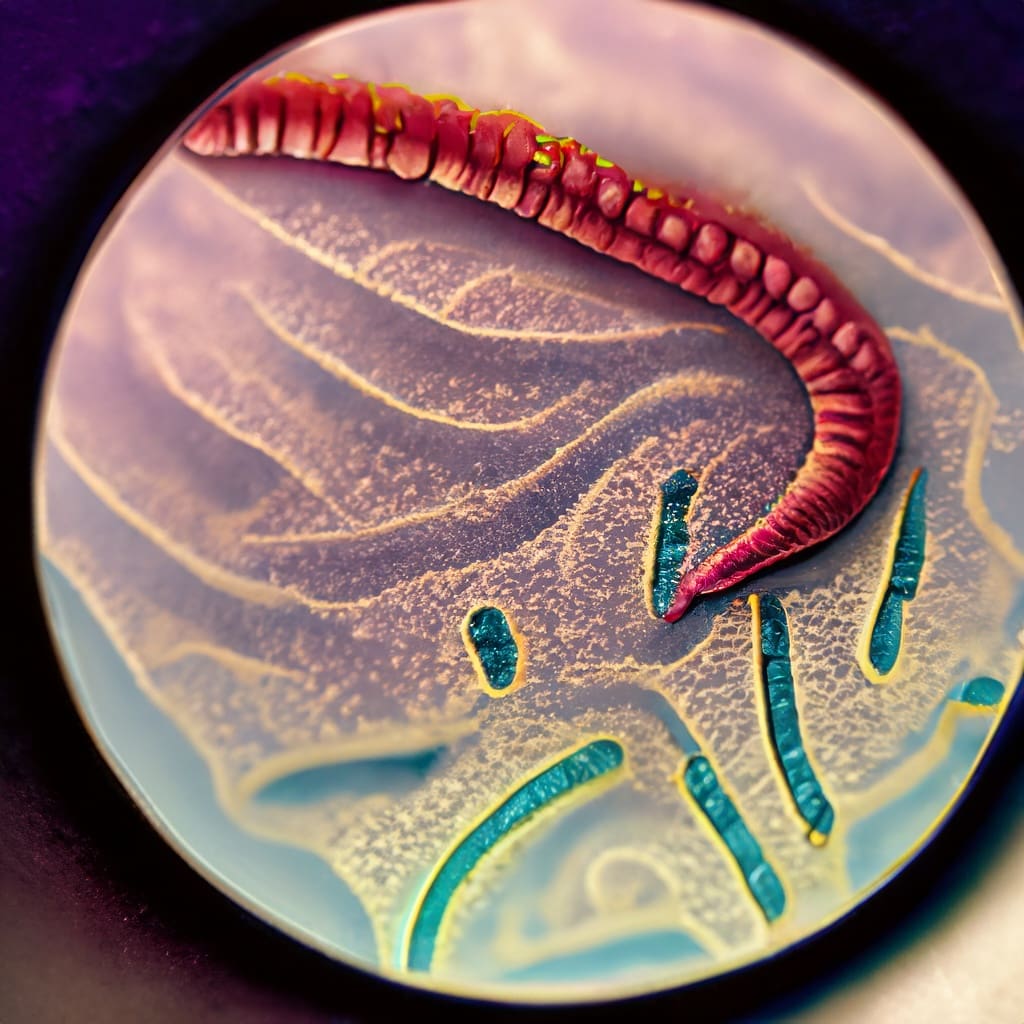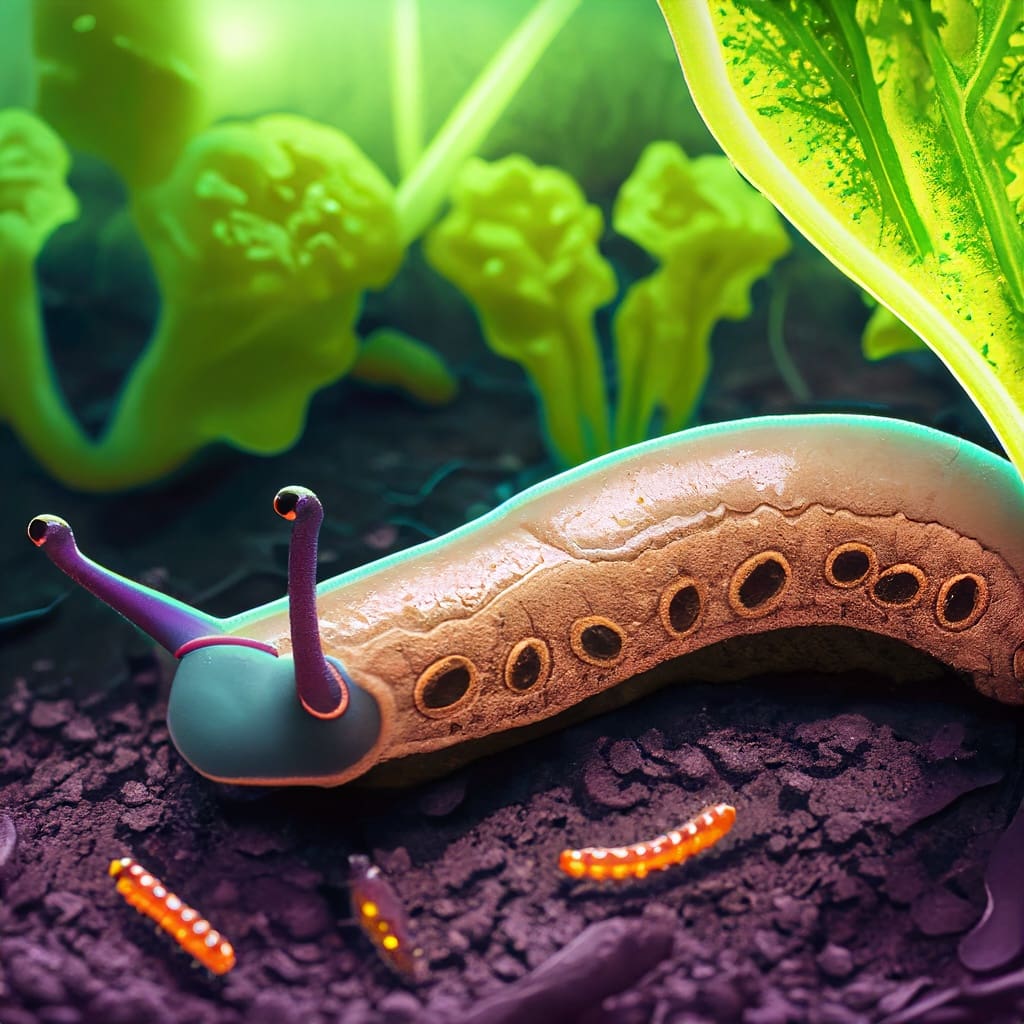Introduction
Earlier this year, I had a conversation with a fellow plotholder at our allotment where I complained about my lettuce being munched by slugs. Their lettuces were doing great and they proudly announced they had Nematodes. I thought that was a medical condition! Quickly googling what are nematodes, I was immediately fascinated with them. Enough to write this article!
The Kettle Whistle allotment is a special place. Not only a place to destress but also where we cultivate a variety of crops to enjoy fresh, homegrown produce. Maintaining this comes with its challenges. One of these is dealing with garden pests such as slugs, wireworms, and vine weevils that have wreaked havoc on our crops. Our lettuce, potatoes, and beetroot were the most badly affected. Enter our new buddy, nematodes! The unsung heroes of the allotment world.
In this article, we will delve into the fascinating world of nematodes, exploring what they are, their historical use, where they come from, their purpose, their working mechanism, potential risks to food crops, how best to use them, and when it’s best to avoid using them.
What are Nematodes?
Nematodes, often referred to as roundworms, are a diverse group of microscopic worms belonging to the phylum Nematoda. They inhabit a wide range of environments, including soil, freshwater, and marine ecosystems. While nematodes play various roles in nature, including decomposition and nutrient cycling, some are beneficial to gardeners and farmers due to their predation on garden pests, such as Slugs.

The use of nematodes for pest control dates back centuries. Indigenous peoples in various parts of the world recognised the potential of certain nematode species to control insect pests. However, the modern use of nematodes in agriculture and gardening began to gain momentum in the mid-20th century.
One of the earliest documented uses of nematodes for pest control was in the 1930s. Researchers identified a nematode species, Steinernema feltiae, as a natural predator of the Colorado potato beetle larvae. This discovery marked the beginning of extensive research into the potential of nematodes for pest management.
Where do Nematodes come from?
Nematodes used in pest control are typically produced through a process known as “in-vitro mass rearing.” This involves culturing nematode species like Steinernema or Heterorhabditis in a controlled laboratory environment.
Nematode production involves:
- Isolation: Nematodes are isolated from their natural habitat or other sources where they are known to exist.
- Rearing: They are then reared on suitable host insects, which act as a food source for nematode populations.
- Harvesting: Mature nematodes are harvested from the infected host insects.
- Packaging: The nematodes are packaged in a carrier material that allows them to be applied to the soil.
These packaged nematodes are then ready for distribution and use in gardens and agricultural settings.
So, What Are Nematodes For?
Nematodes serve as natural, biological control agents for a wide range of garden and soil-dwelling pests. Nematodes effectively combat many common garden pests, including:
- Slugs: The slimy menace of The Kettle Whistle lettuce patch, slugs can devour young seedlings and tender plants. Nematodes, specifically Phasmarhabditis hermaphrodita, target and control slug populations effectively.
- Cockchafer Grubs: The larvae of the cockchafer beetle can devastate grass and plant roots in UK gardens. Nematodes, particularly Heterorhabditis bacteriophora, are effective against these grubs.
- Wireworms: Wireworms are notorious for their damage to root crops like potatoes and carrots. Beneficial nematodes can help manage wireworm infestations in UK allotments.
- Fungus Gnats: Nematodes target the larvae of fungus gnats, which can harm the roots of plants.
- Vine Weevils: These destructive pests can damage the roots and leaves of various plants, including strawberries and ornamental flowers.
- Codling Moths: Nematodes can help control the larvae of codling moths, which infest apple and pear trees.
- Root Knot Nematodes: Ironically, some nematode species are effective against their harmful counterparts. Beneficial nematodes can reduce populations of root-knot nematodes that attack plant roots.
- Cutworms: Nematodes can help control the larvae of cutworms, which are notorious for cutting down young seedlings at ground level.
How Do They Work?
Nematodes employ a fascinating mechanism to control garden pests. Nematodes actively search for their prey, in the form of insect larvae or pupae. Once they locate a host, nematodes enter the pest’s body through natural openings like the mouth or spiracles (small breathing holes).
Inside the host, nematodes release symbiotic bacteria from their gut. These bacteria multiply rapidly and release toxins that ultimately kill the host. As the insect dies, the nematodes feed on the bacteria, reproduce, and produce a new generation of nematodes. These offspring then emerge from the dead host in search of new prey, continuing the cycle.

Are They Dangerous for Food Crops?
One common concern I had was whether using nematodes as a pest control method poses any risks to food crops. The good news is that beneficial nematodes are generally safe for food crops when used correctly.
These nematodes are highly specific in their prey selection and target only insect pests. They do not harm plants, animals, or humans. Additionally, they do not leave any harmful residues on the crops or in the soil. They are an eco-friendly pest control option. Far safer than using slug pellets which cause a risk to wildlife.
How Often Do I Need to Use Them?
The frequency of nematode applications depends on several factors, including the specific pest problem, environmental conditions, and the nematode species used. Here are some general guidelines:
- Initial Application: Begin by applying nematodes when you first detect signs of pest infestations in your garden. This may vary depending on the season and region.
- Repeat Applications: Depending on the persistence of the pest problem, you may need to apply nematodes every 2 to 6 weeks throughout the growing season. Monitor your garden regularly to assess the need for reapplication.
- Soil Temperature: Nematodes are most effective when the soil temperature is between 10°C and 30°C (50°F to 85°F ). Adjust the timing of applications accordingly.
- Irrigation: Adequate moisture in the soil is essential for nematode survival and activity. Ensure your garden receives sufficient water, especially during dry spells.
When Not to Use Them
While nematodes can be highly effective for pest control, there are situations when their use may not be suitable:
- Extreme Temperatures: Avoid applying nematodes during excessively hot or cold periods, as they may not perform well under such conditions.
- Chemical Pesticides: Some chemical pesticides can harm beneficial nematodes. If you’ve recently used chemical pesticides in your garden, it’s advisable to wait for a few weeks before introducing nematodes.
- Heavy Rainfall: Heavy rain can wash away nematodes from the target area, reducing their effectiveness. Check the weather forecast before application.
- Non-target Insects: While nematodes are highly specific, they may occasionally infect non-target insects, such as pollinators. Exercise caution when applying them near flowering plants. Our beloved Bees are not affected by nematodes.
Conclusion
Nematodes have emerged as new friends to the Kettle Whistle allotment. Invaluable allies in the fight against garden pests and our lettuce patch. Their natural and eco-friendly approach to pest control makes them an attractive choice for gardeners who wish to protect their crops without resorting to chemical pesticides. By understanding what nematodes are, how they work, and when and how to use them, you can harness the power of these microscopic warriors. Maintaining a healthy and thriving allotment. Remember, nematodes are not just tiny creatures; they’re the tiny heroes that help safeguard your crops!
Thank you so much for reading, check out out YouTube Channel and our Instagram for the latest content. Hope to see you again soon.

This is super informative! I’m glad I spotted your post because it’s better than similar posts I’ve seen from everyone else on this subject. May I ask you to write more about this? Could you provide any further example? many thanks 🙂